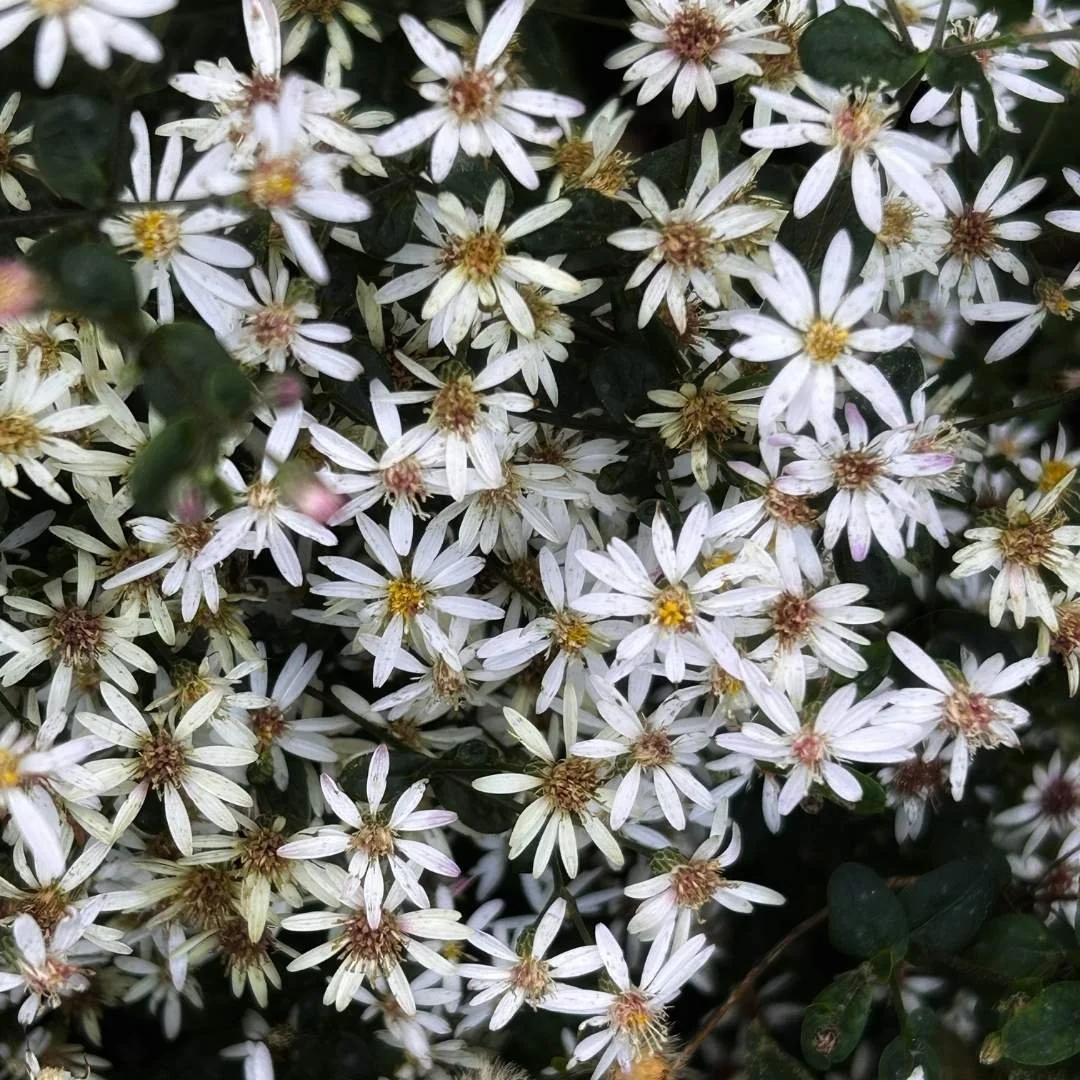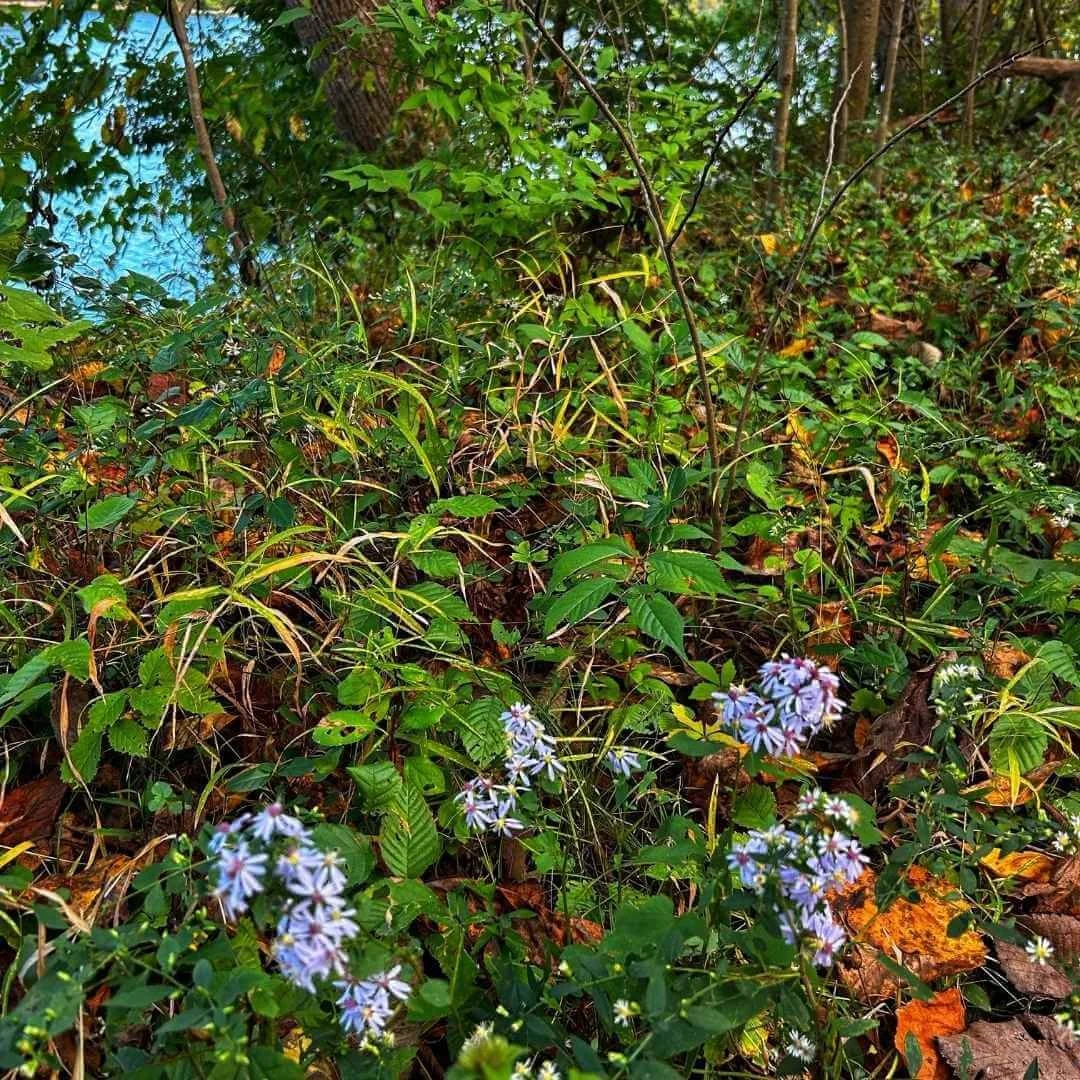Struggling with Dry Shade? Hello, White Wood Aster
This problem-solving perennial thrives in the dry shade underneath trees.
Got dry shade under towering trees where nothing seems to thrive? Meet your new best friend: white wood aster (Eurybia divaricata).
This tough, no-fuss perennial laughs in the face of dry shade, filling those tricky spots with a lush carpet of heart-shaped leaves and delicate white flowers.
Blooming from late summer into fall, it adds a much-needed glow to shadowy woodland edges while serving as a vital nectar source for butterflies and a seed buffet for winter birds.
Bonus: It spreads willingly (sometimes a little too enthusiastically!) by rhizomes and self-seeding, making it a powerhouse perennial for naturalistic plantings.
If you’re looking to turn that barren, tree-root-riddled zone into a thriving pollinator haven, white wood aster is the answer!
It’s hard to find a flowering ground cover plant for dry shade!
How to Grow White Wood Aster
Location: Plant white wood aster in a location with part to full shade and average, medium to dry well-draining soil. It will tolerate clay soil and can even thrive in the dry shade underneath a tall tree canopy.
Planting: The best time of year to plant this native aster is in the spring or fall, giving the roots time to establish before the onset of extreme hot or cold weather. Water deeply after planting (for more information on watering, read “How to Water your Plants”.
Watering: Keep the soil moist during the first growing season to help the aster grow a healthy root system and become established. Once established, plants need less water and can even tolerate periods of drought. Are you in a drought? Check the U.S. Drought Monitor.
Mulching: Apply a layer of mulch around the plants to help retain moisture and suppress weeds.
Trimming Back: If you would like denser, more compact growth, shear plants back to 6 inches in late spring to early summer.
Is White Wood Aster Invasive?
White wood aster is native to eastern North America and is not classified as an invasive plant. In parts of Canada, it is actually classified as an endangered species. However, when given the right conditions, white wood aster will spread aggressively.
The terms "invasive" and "aggressive" are often used interchangeably, but they have different meanings in the context of plants and ecosystems.
“Invasive" is associated with non-native species that harm local ecosystems, and "aggressive" simply describes a plant's growth and spreading behavior, which can be observed in both native and non-native species.
When white wood aster is happy, it can (and will) spread aggressively. If you want to cover a large, shady area with a low-maintenance perennial, this can be a wonderful thing!
But if you want a plant that stays put and does not creep out of bounds in a mixed border, this is not the plant for you - try something else, like Astilbe or Japanese Hakone grass (Hakonechloa macra).
White Wood Aster's vigorous spread through rhizomes makes it an excellent choice as a ground cover for shaded areas.
Is White Wood Aster Deer-Resistant?
All asters, including white wood aster, are considered to be deer-resistant plants. Deer tend to avoid aster’s foliage and flowers, most likely due to their unappetizing taste or texture (I haven’t asked a deer, so who really knows? 😉).
Rutgers University rates aster species as “seldom severely damaged” on their list of Landscape Plants Rated by Deer Resistance. But, sadly, no plant is 100% deer proof.
When food is limited, deer become less picky and will eat almost anything, including plants they usually avoid.
Garden Ideas for White Wood Aster
When using white wood aster in the garden, keep in mind the aggressive spreading nature of this perennial.
White wood aster looks great in a naturalized shade garden, where it can ramble around other perennials like Christmas fern (Polystichum acrostichoides), variegated Solomon’s seal (Polygonatum odoratum ‘Variegatum’), and woodland phlox.
This plant is both a butterfly nectar and host plant, making it a great choice for a butterfly garden. Plant in a pollinator garden, where it becomes an important source of late-season nectar for bees and native pollinators.
White wood aster is an exceptional problem-solving plant for the challenging areas of dry shade in the landscape. It brings life to what otherwise may be a barren and overlooked spot, such as the space underneath tall, mature trees or a shady slope where moisture is scarce.
Fill these dry areas with white wood aster, spacing plants 2 feet apart to create a thick ground cover that will crowd out weeds and require little maintenance.
Asters growing in their native environment along the banks of the Potomac River.
Planting Companions for White Wood Aster
Autumn Fern Brilliance (Dryopteris erythrosora 'Brilliance')
Himalayan Sweet Box (Sarcococca hookeriana var. humilis)
Allegheny Spurge (Pachysandra procumbens)
Foamflower (Tiarella cordifolia)
Bunny Blue Creeping Sedge (Carex laxiculmis ‘Bunny Blue’)
Wild Ginger (Asarum canadense)
Spreading Japanese Plum Yew (Cephalotaxus harringtonia ‘Prostrata’)
Variegated Solomon’s Seal (Polygonatum odoratum ‘Variegatum’)
Christmas Fern (Polystichum acrostichoides)
Woodland Phlox (Phlox divaricata)
Mount Airy Fothergilla (Fothergilla ‘Mount Airy’)
Common Witch Hazel (Hamamelis virginiana)



